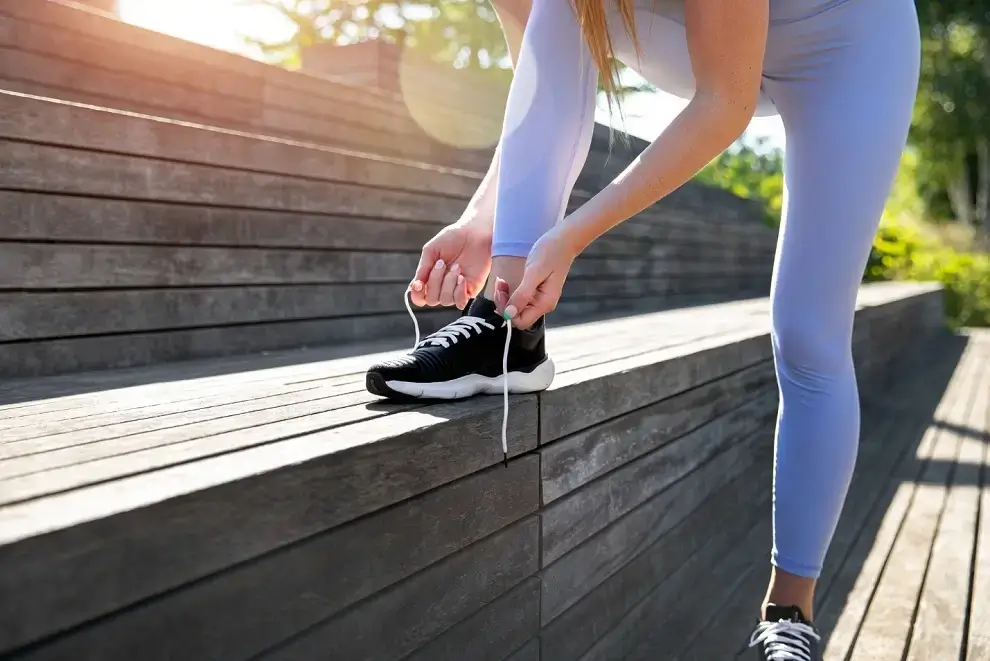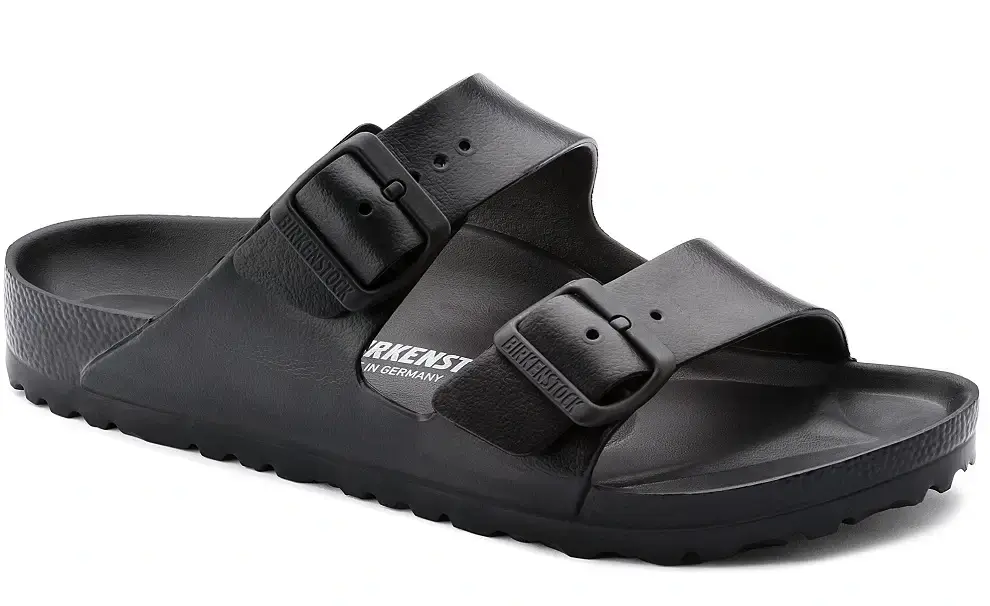Introduction

Are you considering having the best shoes to wear after hip replacement and wondering if you’ll ever be able to tie your shoelaces again? Then you’ve come to the right place!
From pre-surgery planning to post-surgery recovery tips, this blog will help you get back on your feet with greater mobility and health.
We’ll answer common questions about recovering from hip replacements, such as “How long after hip replacement can I tie my shoes?” and more.
Together, we will strive towards embracing life’s new opportunities that stem from your procedure, no matter how daunting it may feel.
Table of Contents
So, How Long After Hip Replacement Can I Tie My Shoes?

Once you have completed hip replacement surgery, knowing what activity is safe for your new hip joint can be challenging. You should follow your doctor’s rehabilitation plan to recover quickly from surgery and prevent further injuries or strains on your hip joint.
Regarding activities such as tying shoelaces, most doctors advise waiting anywhere from 4-6 weeks after the surgery before attempting any activities requiring bending or twisting.
Suppose you feel pain when trying to tie your shoes-laces or need to hold onto something for support. In that case, it’s best to wait and talk with your doctor first before moving forward with this activity.
What Is The Average Healing Time For a Hip Replacement Surgery?
You must know the average healing time before contacting the best shoes after hip replacement. Typically, hip replacement surgery involves replacing the head of the femur bone and the joint socket with a prosthetic model to correct any structural issues.
Depending on the severity of pre-existing conditions, age, and overall health status of the patient, recovery times vary considerably.
An average hip replacement takes six to eight weeks to heal completely. To expedite healing and reduce potential risks associated with noncompliance, patients need to follow their physician’s instructions precisely during this period.
Physical therapy may be offered or recommended 4-6 weeks after surgery to improve strength, coordination, balance, and flexibility around the new hip joint.
After undergoing hip replacement surgery, full rehabilitation can take months as follow-up doctor visits, physical therapy, and ensuring proper healing takes place.
Is it a good idea to buy new shoes after hip replacement?
Buying new shoes after hip replacement surgery is not a consensus. Some orthopedists recommend purchasing new shoes shortly after the surgery, while others suggest waiting until the patient has regained more mobility and better balance.
For specific advice on when to buy new shoes, consult your orthopedist.
After hip replacement surgery, it’s a good idea to replace old shoes and know the best shoes to wear after hip replacement surgery.
The old shoes you wear can cause pain, foot problems, and even injury to your ankles and knees.
When considering what new shoes to buy, finding a pair that offers good support and cushioning for your feet is crucial.
After hip replacement, what type of shoes can you wear?
A hip replacement can make it difficult to find comfortable and stable shoes. While physicians might give a few brief recommendations, selecting the right shoes largely depends on the patient’s preference.
When deciding on the best shoes to wear after a hip replacement, it’s important to look for footwear that provides support and stability as you walk.
Sneakers with plenty of cushioning or a modest heel can help reduce the impact on your new joint.
Look for thick-soled shoes made from flexible materials and ensure they are wide enough not to rub against your feet or your scars.
Depending on how much support each weight-bearing step requires, your surgeon may prescribe orthopaedic shoes or sandals as part of your recovery process.
So read below to find out what are the features of the best shoes after hip replacement.
What Are the Important Features of Shoes to Wear After Hip Replacement?

Having a hip replacement is a major life event, and it can take time to adjust to the physical changes you will experience.
One of the most significant choices you will make on your recovery journey is selecting the right pair of shoes. Shoes are an important part of post-replacement hip rehabilitation.
When shopping for shoes after a hip replacement, there are a few key features that should be taken into consideration:
Comfort
Shoes with comfort features such as cushioned soles help relieve pressure and discomfort on the new hip joint. An adjustable fit, such as shoes with hook-and-loop closures, is ideal for individuals with decreased range of motion in the affected limb after surgery.
If a person has any type of swelling in their foot or ankle, look for comfy options which allow extra room for swollen tissues. Good arch support helps prevent injuries and promotes proper stride.
Above all, the shoes must offer stability for increased balance and safety throughout daily activities.
Arch Support
It is imperative to wear shoes that provide proper arch support after hip replacement surgery.
This can help evenly distribute your weight across the foot, providing a solid foundation to decrease stress on the new hip joint.
Shoes with a reinforced and slightly higher heel section may also be beneficial since they straighten the leg while walking, which helps cushion pressure on the new hip.
Heel Height
When you need a hip replacement, selecting the correct shoes is important in regaining one’s mobility. It is important to consider the heel height when selecting shoes.
Heels that are too high can lead to instability and increase the fall risk.
Opt instead for heels that are low to the ground. An inch or two should suffice at maximum. This allows better stability and shock absorption and helps one keep their balance.
Comfortable and supportive shoes, with proper heel heights and adjustability features, should be considered essential for someone recovering from a hip replacement procedure.
Midsole
Because the midsole distributes pressure evenly across your foot and reduces shock to your joints, it is vital. Often, shoes designed specifically for post-op hip replacement patients contain additional cushioning in the midsole.
The upper design is also key for maximum stability. Shoes with straps or zippers that provide a snugger fit around the ankle are good options.
Make sure any shoe you wear after hip surgery has excellent arch support. This feature can help improve stability and keep your new joint in proper alignment.
Wearing shoes after hip replacement surgery: what are the best options?

Fortunately, several available brands specialize in providing the support and comfort needed after surgery to help make the transition period easier.
Soft sneakers, slip ons, and dress shoes are all available, with extra padding at pressure points, arch supports, and high-traction soles.
Here are the top 5 of the best shoes to wear after hip replacement surgery:
- Skechers Women’s Go Joy
- Skechers Men’s Equalizer Persistent Slip-On Sneaker
- On Cloud Monochrome
- New Balance Men’s 481 V3
- Men’s Nike Air Max Invigor Low Top Running Sneakers
Best Sandals To Wear After Hip Replacement

While you are thinking, How long after hip replacement can I tie my shoes? You can wear sandals for certain activities, such as walking, standing, and climbing stairs, throughout your recovery process.
The five best sandal options are below:
- Birkenstock EVA Arizona
- Crocs Sandals
- Orthofeet Arch Support Sandals
- OluKai Ohana
- Vionic Tide II.
These sandals provide a wide range of features that make them ideal for anyone looking to maintain comfort after their hip replacement. Birkenstocks offer lasting support thanks to contoured cork footbeds.
Crocs provide the perfect combination of cushioning and arch support. Orthofeet Proven Comfort provides added cushioning with air pockets in the heel area, plus four layers of foam cushioning contact with the sole and insole areas.
OluKai Ohanas feature anatomically correct arch support and a dual-density footbed for increased comfort and shock absorption.
Vionic Tide IIs feature lightweight materials so your feet won’t tire during long days, with plenty of padding for comfortable walking.
Ultimately, these five sandals have a combination of features that can help you remain comfortable after hip replacement surgery.
What Are Some Post-Surgery Exercises That Can Help With Healing
After surgery, it is important to get back into exercise and help with the healing process in a safe and controlled way.
Post-surgery exercises should start with a gentle range of motion exercises first which can involve moving the affected body part in all directions.
This helps reduce stiffness, swelling and scar tissue formation. As long as you don’t stretch beyond your limits, you can add some light stretching to this.
Gentle, low-impact aerobic activity can help maintain endurance and general conditioning such as walking or swimming. Consult with your healthcare provider first when you exercise after surgery.
You must follow your healthcare provider’s instructions and carefully monitor your body’s response to the exercises to recover safely from surgery.
Final Verdict
Most people who have hip replacements can tie their shoes within 4 to 6 weeks. It is essential to start slowly and increase your activity level as tolerated by your pain.
You may need to use a reacher or long-handled shoe horn to tie your shoes during this time.
If you have any concerns about restriction in motion or pain, don’t hesitate to contact your surgeon.

